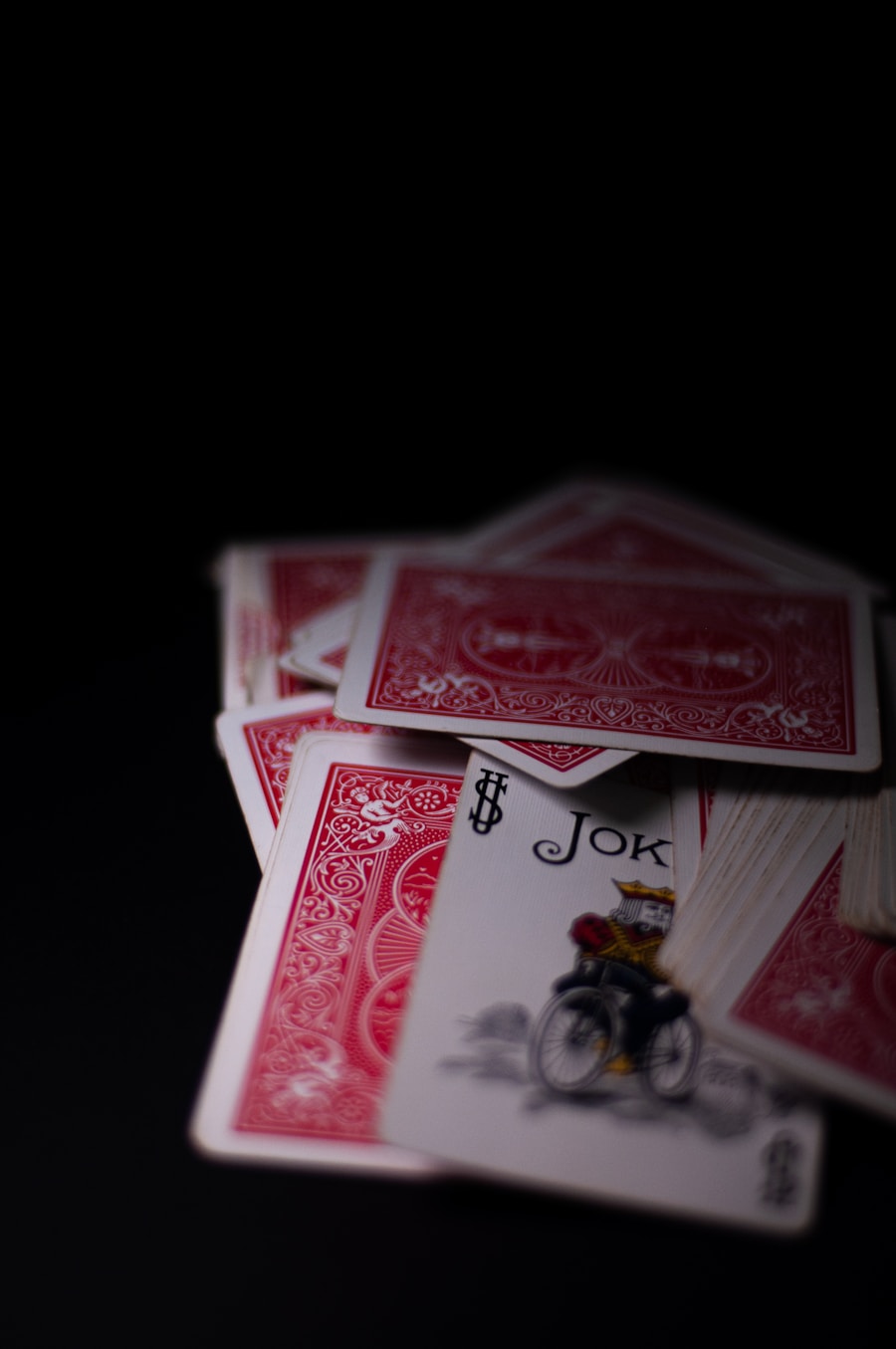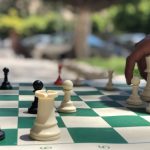Mastering the Art of Blackjack: Strategies for Success
Description
Blackjack, also known as 21, is a popular card game that combines elements of chance and skill. The objective is straightforward: players aim to have a hand value that is closer to 21 than the dealer’s hand without exceeding that number. Each player is dealt two cards, and the dealer also receives two cards, with one card face up and the other face down.
The values of the cards are simple; numbered cards from 2 to 10 are worth their face value, while face cards (kings, queens, and jacks) are valued at 10.
Understanding the basic rules is crucial for any aspiring player.
Players can choose to “hit” (take another card) or “stand” (keep their current hand). If a player’s total exceeds 21, they “bust” and lose the round automatically. The dealer must follow specific rules regarding when to hit or stand, typically hitting until reaching a total of 17 or higher.
This structured approach creates a dynamic environment where players must not only consider their own hands but also anticipate the dealer’s potential outcomes. Familiarity with these rules lays the foundation for more advanced strategies and techniques that can enhance a player’s chances of success.
Key Takeaways
- Blackjack is a popular casino game where the goal is to beat the dealer’s hand without going over 21.
- A winning mindset in blackjack involves discipline, patience, and the ability to manage emotions during both winning and losing streaks.
- Card counting is a strategy used to track the ratio of high to low cards in the deck, giving players an advantage in making betting and playing decisions.
- Effective betting strategies in blackjack include understanding the odds, managing bankroll, and adjusting bet sizes based on the game’s progression.
- Mastering the art of decision making in blackjack involves knowing when to hit, stand, double down, split, or surrender based on the player’s hand and the dealer’s upcard.
Developing a Winning Mindset
Emotional Control
Maintaining composure allows players to make rational choices based on strategy rather than emotion. For example, if a player experiences a losing streak, it’s crucial to stick to their predetermined strategy rather than hoping for a quick recovery.
Setting Goals and Limits
Successful blackjack players often set clear goals and limits before they start playing. This includes establishing a budget for how much they’re willing to spend and determining when to walk away from the table, regardless of whether they’re winning or losing.
The Benefits of a Disciplined Mindset
By following these guidelines, players can avoid the pitfalls of emotional gambling and maintain a level-headed approach throughout their gaming experience. This disciplined mindset not only enhances enjoyment but also increases the likelihood of long-term success at the tables.
Learning the Fundamentals of Card Counting

Card counting is a technique that can significantly improve a player’s odds in blackjack by keeping track of the ratio of high cards to low cards remaining in the deck. While it may seem complex at first glance, the basic principle is relatively straightforward: high cards (10s, face cards, and aces) are advantageous for players, while low cards (2 through 6) favor the dealer. By assigning values to different cards—typically +1 for low cards and -1 for high cards—players can maintain a running count as cards are dealt.
A higher positive count indicates a greater proportion of high cards remaining in the deck, which is favorable for the player. To effectively implement card counting, players must practice their skills outside of the casino environment. This can involve using a single deck of cards to simulate gameplay and honing the ability to keep track of the count while simultaneously making decisions about hitting or standing.
Advanced techniques may involve adjusting betting strategies based on the count; for example, increasing bets when the count is high can capitalize on favorable situations. However, it is essential to remember that while card counting can provide an edge, it requires significant practice and concentration to execute effectively during actual gameplay.
Implementing Effective Betting Strategies
| Strategy | Success Rate | Average Return on Investment |
|---|---|---|
| Martingale | 50% | 5% |
| Kelly Criterion | 60% | 10% |
| Arbitrage Betting | 80% | 15% |
Betting strategies in blackjack are crucial for managing bankroll and maximizing potential winnings. One popular approach is the Martingale system, where players double their bet after each loss, aiming to recover previous losses with a single win. While this strategy can be effective in the short term, it carries significant risks, particularly if a player encounters a long losing streak that depletes their bankroll before they can achieve a win.
Another effective betting strategy is the Paroli system, which focuses on capitalizing on winning streaks rather than chasing losses. In this system, players increase their bets after each win while returning to their original bet after a loss. This method allows players to take advantage of positive momentum while minimizing risk during downturns.
Regardless of the chosen strategy, it is essential for players to remain disciplined and adhere strictly to their betting plan. This discipline helps prevent emotional decision-making that can lead to significant losses.
Mastering the Art of Decision Making
Decision-making in blackjack is an art that combines knowledge of basic strategy with an understanding of situational factors such as the dealer’s upcard and the player’s current hand total. Basic strategy charts provide guidelines on when to hit, stand, double down, or split pairs based on statistical probabilities. For instance, if a player has a total of 16 and the dealer shows a 10, basic strategy suggests hitting due to the high likelihood of busting if they stand.
However, mastering decision-making goes beyond simply following charts; it requires players to adapt their strategies based on real-time conditions at the table. For example, if a player has been counting cards and notices a favorable count, they may choose to deviate from basic strategy by increasing their bets or taking risks they would typically avoid.
Tips for Improving Your Blackjack Skills

Improving blackjack skills involves continuous learning and practice. One effective method is to engage in regular gameplay, whether at home with friends or through online platforms that offer free play options. This allows players to familiarize themselves with different scenarios without financial pressure while honing their decision-making skills in real-time situations.
Another valuable tip is to study various resources dedicated to blackjack strategy. Books written by seasoned players and experts can provide insights into advanced techniques such as shuffle tracking or hole carding—methods that can further enhance a player’s edge over the house. Additionally, joining online forums or communities where players share experiences and strategies can foster growth and provide new perspectives on gameplay.
Lastly, maintaining physical and mental well-being is crucial for optimal performance at the blackjack table. Adequate rest, nutrition, and stress management techniques can significantly impact focus and decision-making abilities during gameplay. By prioritizing these aspects alongside strategic learning and practice, players can elevate their blackjack skills and enjoy a more rewarding gaming experience.
FAQs
What is Blackjack?
Blackjack is a popular card game played in casinos around the world. The goal of the game is to beat the dealer by having a hand value closer to 21 without going over.
How is Blackjack played?
In Blackjack, players are dealt two cards and can choose to “hit” (receive another card) or “stand” (keep their current hand). Players can also choose to “double down” (double their bet and receive one more card) or “split” (if they have two cards of the same value, they can split them into two separate hands). The dealer also receives two cards, one face up and one face down.
What is the value of the cards in Blackjack?
In Blackjack, the numbered cards are worth their face value, face cards (Jack, Queen, King) are worth 10, and Aces can be worth either 1 or 11, depending on the player’s choice.
What is a “Blackjack” in the game?
A “Blackjack” occurs when a player is dealt an Ace and a 10-value card (10, Jack, Queen, King) as their initial two cards. This is the best hand in the game and typically pays out at a higher rate than a regular win.
What are the basic rules of Blackjack?
The basic rules of Blackjack include trying to get a hand value as close to 21 as possible without going over. Players can choose to hit, stand, double down, or split their hand, and the dealer must follow specific rules for drawing additional cards.
What is the house edge in Blackjack?
The house edge in Blackjack can vary depending on the specific rules of the game and the player’s strategy. However, it is generally considered to be one of the lowest house edges of all casino games when played with optimal strategy.





